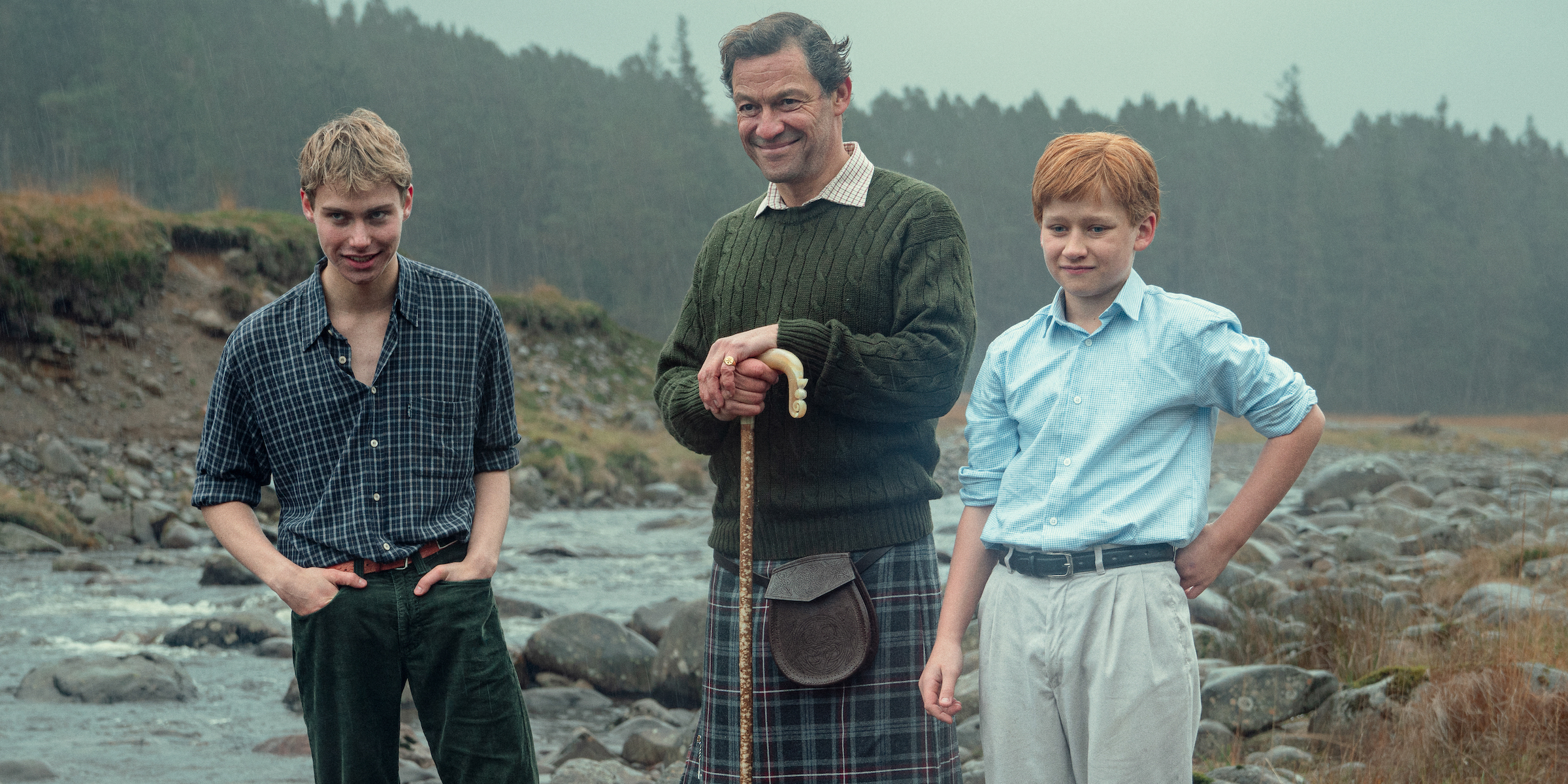Across its previous two seasons, Netflix's The Crown has offered viewers a front-row seat to the tumultuous incompatibility of Prince Charles and Diana, Princess of Wales. But in its sixth and final season—which airs its first four episodes on Nov. 16—the historical drama shows us the foundations of a calmer relationship forming in the year after the couple’s divorce.
The pair had a messy separation in December 1992 and finalized their divorce in August 1996. They co-parented their children until Diana died in a car accident alongside Dodi Fayed in Paris in August 1997. The series paints a picture of this year between their divorce and Diana’s death, showing custody exchanges and pleasantries between the former couple.
In one such scene in episode two, Charles (Dominic West) tells Diana (Elizabeth Debicki) he is proud of her advocacy work with a landmine charity, and asks her: “Even though we weren't brilliant at being married, can we be brilliant at all this?” Diana responds that she thinks they can, while Charles notes that it’s not just for the sake of their children, but also for themselves.
“She didn't get to keep the man of her dreams, but the friend of her dreams,” Diana remarks.
Read more: The Crown Hits a Disappointing New Low in Its Maudlin Sixth Season
Charles also later expresses a desire to play nice when advisors suggest that he engage in tactical media battles with his ex-wife, who is being depicted as unruly by the tabloids. “Diana and I are getting on rather well at the moment. I owe it to her to be onside,” he says.
But with The Crown, storylines come with a dash of creative liberty, so viewers may be skeptical of what the couple’s post-divorce relationship was really like. Reports and experts say that Diana and Charles lived their separate lives but did become friendly.

“Charles and Diana’s relationship had mellowed onto a more civilized plain,” Hugo Vickers, a royal expert who has advised on the show, tells TIME. “ I won’t say they had suddenly become bosom friends but as is the case with many divorced parents, in time things settle down and it does not get more difficult.” He adds that joint interests and mutual concern over their children kept them tethered to one another.
But Tina Brown, the author and former editor of the New Yorker who had a personal connection to the late princess, wrote that this affection went a step further. In her 2007 biography, The Diana Chronicles, Brown recalls a lunch she had with Vogue editor-in-chief Anna Wintour and Diana, in 1997, in which the princess described her relationship with Charles after divorce.
“At the end of Diana’s life, she and Charles were on the best terms they’d been for a very long time,” Brown writes. “Charles got into the habit of dropping in on her at Kensington Palace and they would have tea and a sort of rueful exchange. They even had some laughs together.”
Brown further notes: “It was definitely calming down, the boys were older. They talked about their philanthropies. And she had accepted Camilla. One thing she had finally done was really understand that Camilla was the love of his life, and there was just nothing she could do about it.”
But according to the biographer, Diana did not only have platonic love for Charles. Brown says Diana, whom she believed to be incredibly lonely, told her and Wintour “she would go back to Charles in a heartbeat if he wanted her.” The royal reportedly said that she thought she and Charles would have made a great team, so she was not entirely relieved to be divorced.
Despite this, the calmer waters marked a major departure from their well-documented history of arguments and infidelity. Vickers attributes these improvements to the “passing of time,” and notes that the couple had no major issues over custody.
The real problem, he says, is that they were busy parents and this was felt by their sons. “There were times when the boys were neglected by both of them. They were teenagers, remember, so they could to some extent make up their own minds where they went.”
As such, The Crown shows Charles adapting to the increased demands of being a single parent to two high-profile teenagers after the death of their mother, but also mourning her alongside them.
More Must-Reads from TIME
- Why Trump’s Message Worked on Latino Men
- What Trump’s Win Could Mean for Housing
- The 100 Must-Read Books of 2024
- Sleep Doctors Share the 1 Tip That’s Changed Their Lives
- Column: Let’s Bring Back Romance
- What It’s Like to Have Long COVID As a Kid
- FX’s Say Nothing Is the Must-Watch Political Thriller of 2024
- Merle Bombardieri Is Helping People Make the Baby Decision
Write to Armani Syed at armani.syed@time.com